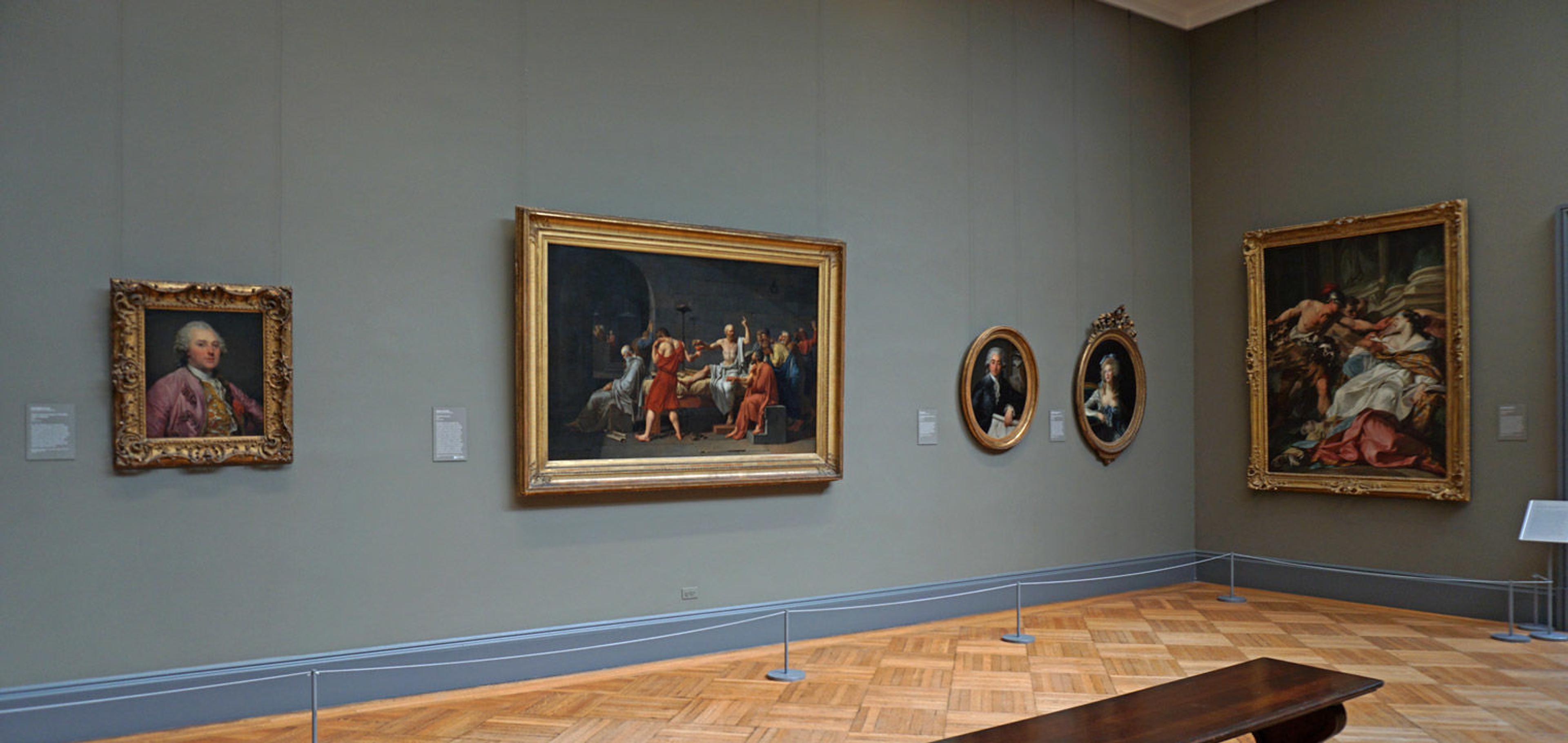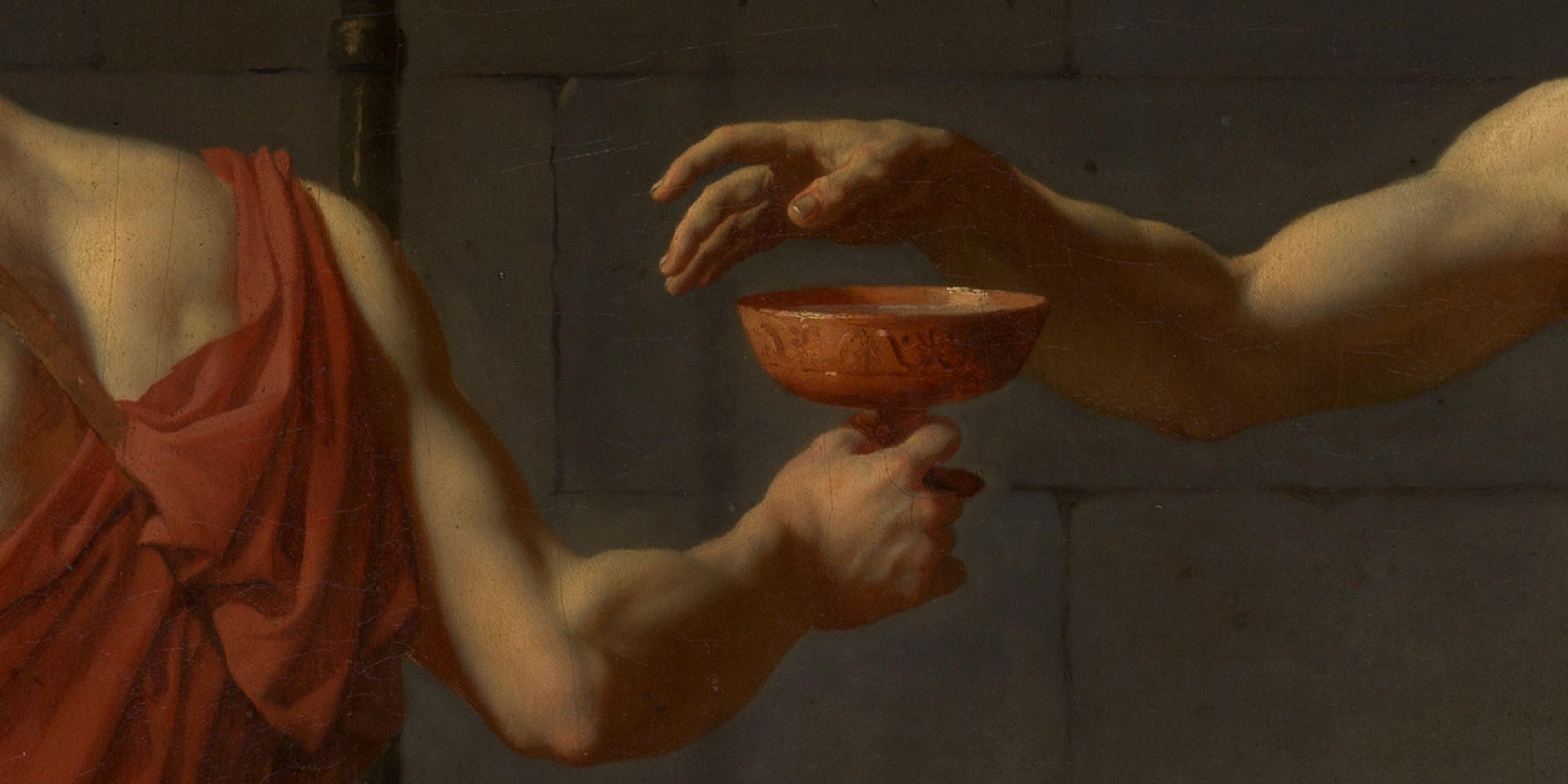
Jacques Louis David (French, 1748–1825). The Death of Socrates (detail)
We all know the problem: You're having a dinner party, and you want the conversation to flow. Some friends are automatic invites, and others . . . well, maybe not this time 'round? But there's a hitch, because sometimes the really interesting conversations come about when you let the unpredictable happen. That's sort of what we did when we faced the challenge of our Skylights Project, which required us to reduce the physical presence of the Department of European Paintings from forty-five galleries of Old Master paintings to eighteen. In these galleries, visitors will now see fewer pictures—only masterworks—hung in a greater concentration, and arranged so as to create the possibility of new conversations and perhaps even an occasional disagreement! Over the next few articles in this blog series, we'll explore some of those new conversations.
One particularly explosive example occurs in gallery 631, where we have hung the great Jacques-Louis David painting The Death of Socrates—a work one scholar has called, "undoubtedly the most perfect of David's Neoclassical compositions."
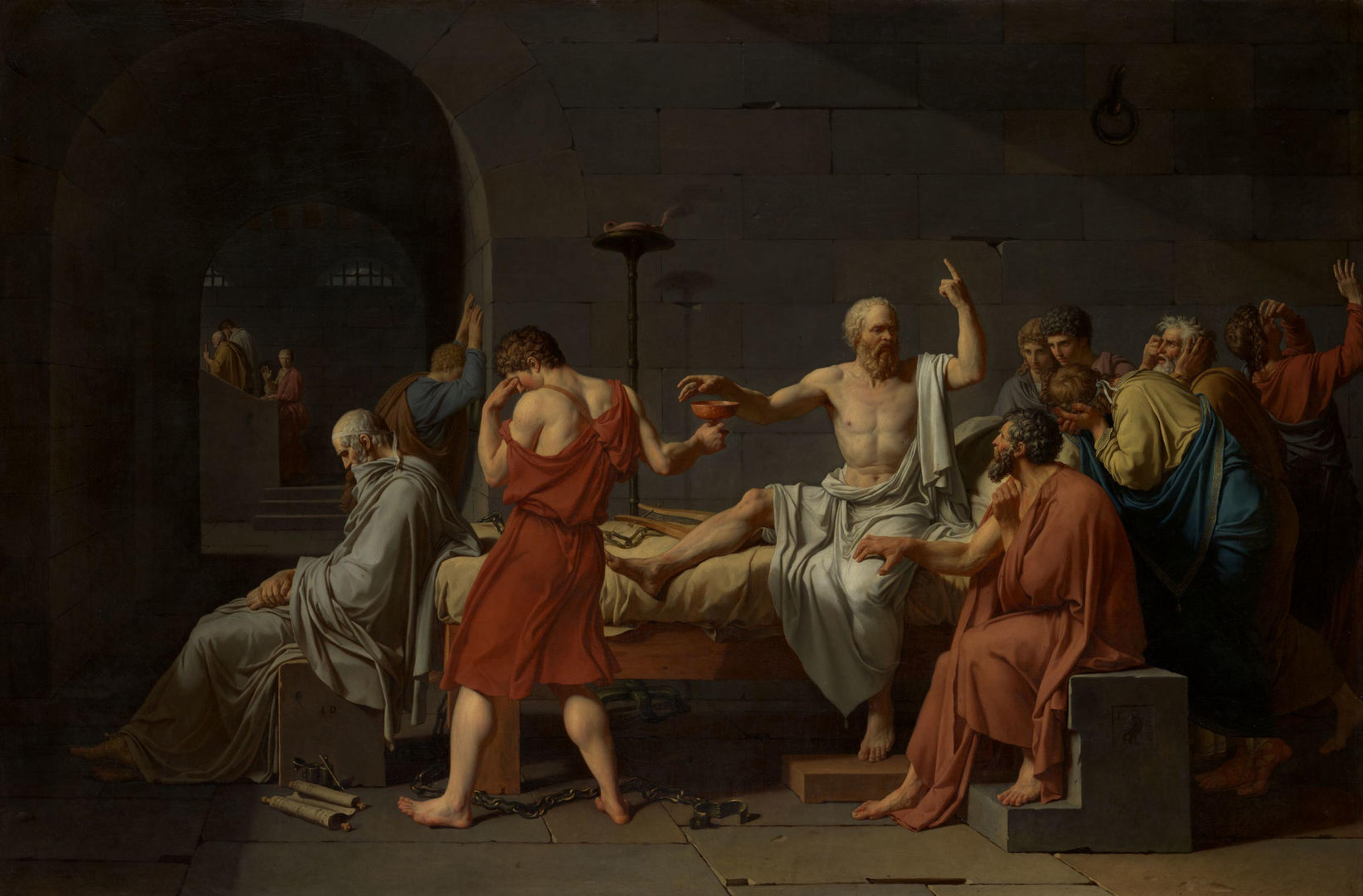
Jacques Louis David (French, 1748–1825). The Death of Socrates, 1787. Oil on canvas, 51 x 77 1/4 in. (129.5 x 196.2 cm). The Metropolitan Museum of Art, New York, Catharine Lorillard Wolfe Collection, Wolfe Fund, 1931 (31.45)
When the painting was on view in its previous location—a large, high-ceilinged gallery filled with works (mostly portraits) that were executed with the awareness of David's achievement—the picture could appear somewhat small. It seemingly addressed the viewer with the retrospective voice of an established professor speaking to a younger generation by recalling the glories of the past in measured alexandrines.
The picture has a completely different appearance after being installed in a smaller gallery with more varied lighting, where it is featured alongside paintings by David's elders and contemporaries. It now addresses the viewer with a voice that is distinctly young and even subversive—penetrating, sharply intelligent, and intolerant of the artificial civilities and tame ideas of the works around it. There is no small talk, no digression. David, like the condemned Socrates he depicts, insists on the seriousness of the matter at hand, which in this case means the willingness to sacrifice life for principles, and he is intolerant of any digression.
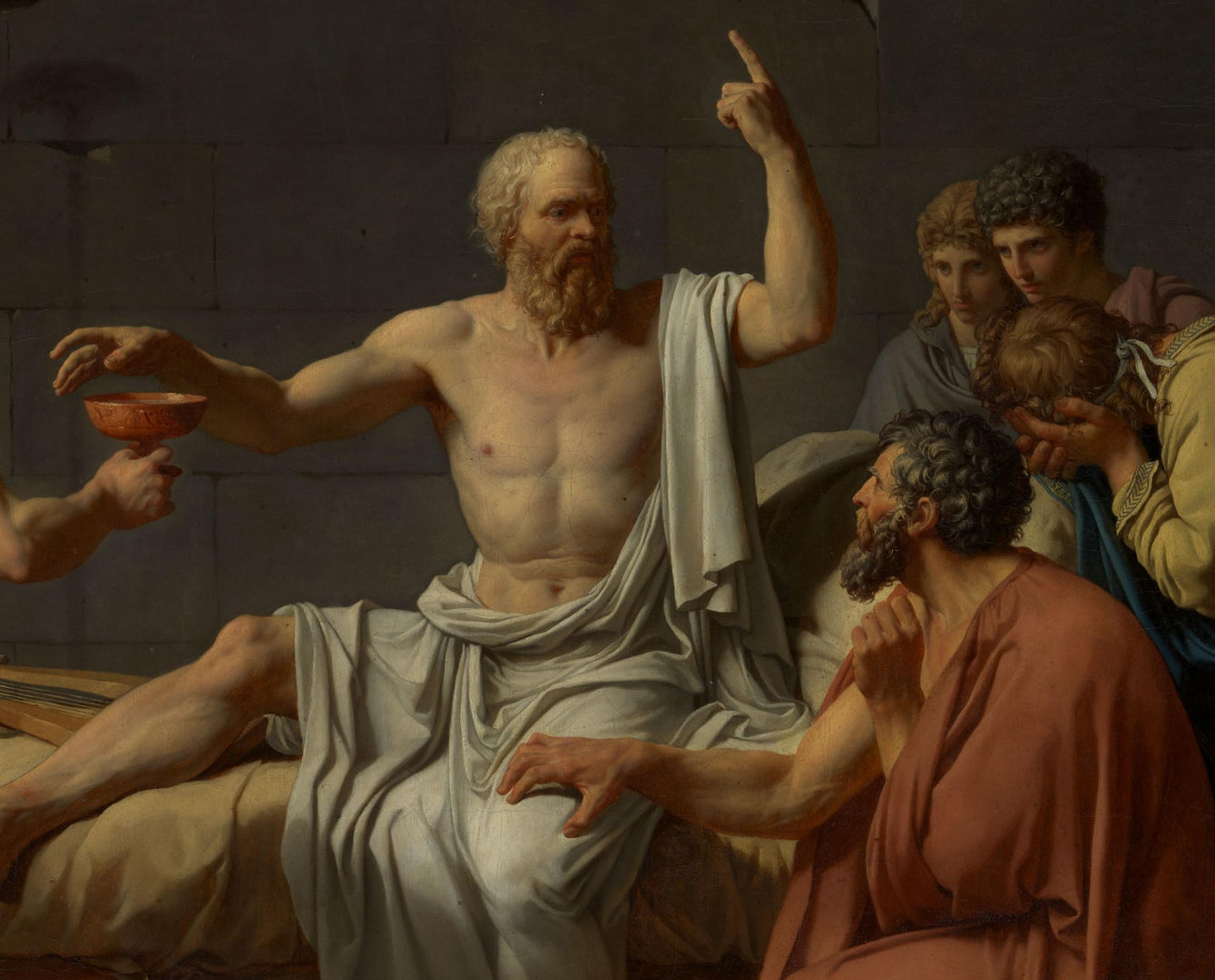
Jacques Louis David (French, 1748–1825). The Death of Socrates (detail)
"This artist is a master . . . His ideas are sublime, his compositions always new; as varied as nature, he is like no one else, and hardly ever like himself." That observation was made by someone who attended the Salon of 1787, where the painting was first shown. Seen in the new installation, the picture is defiant, posing a challenge to the future. David's neo-Attic style seems as radical a challenge to the conventions of his time as Picasso's Demoiselles d'Avignon was 120 years later. Discoveries such as this are yet another reason for revisiting the collection and reinterpreting it in new and exciting ways.
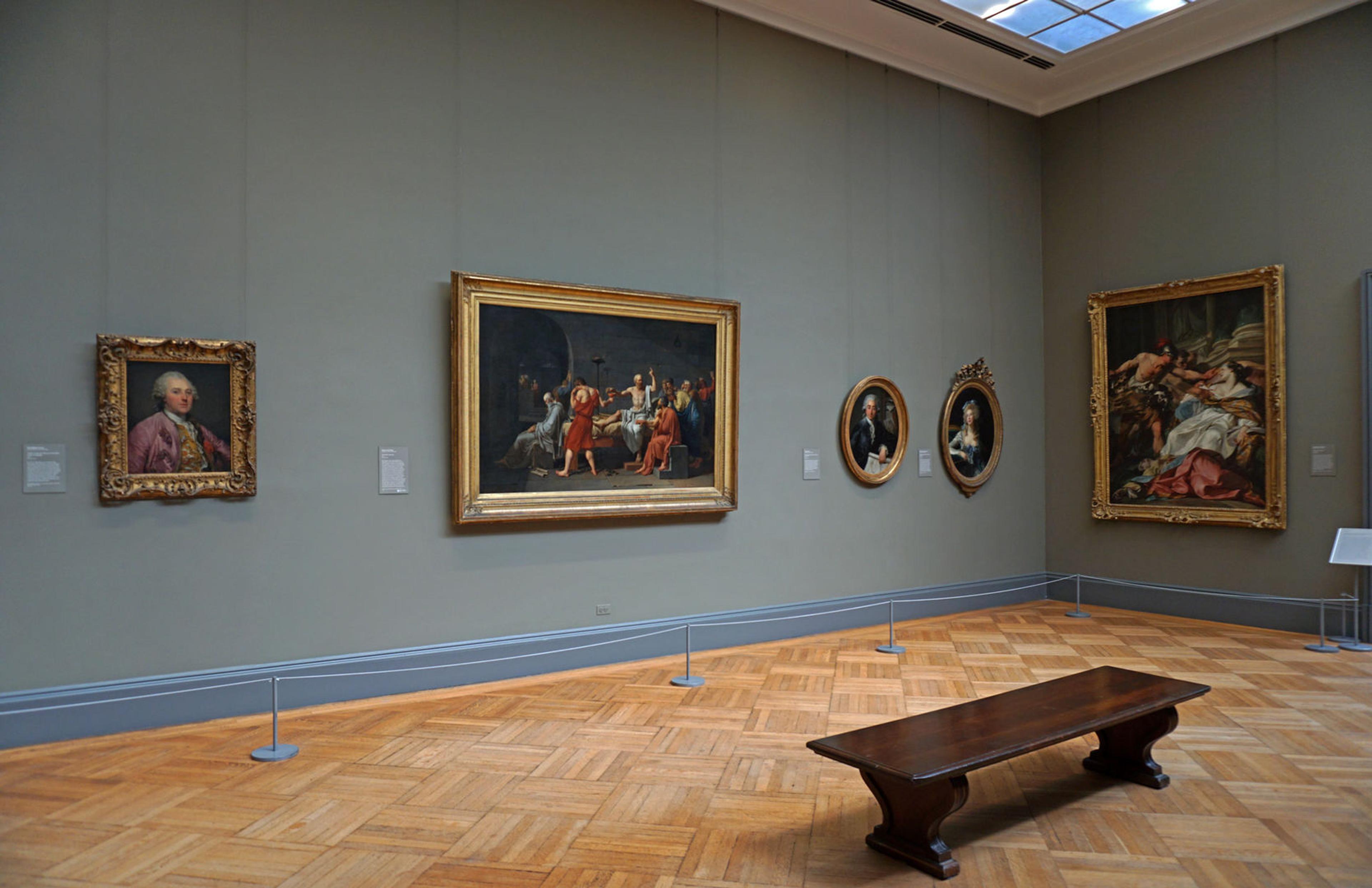
View of The Death of Socrates as newly installed in gallery 631
Related Content
View the web feature Met Masterpieces in a New Light for more information about the Skylights Project and explore ways to engage with the Department of European Paintings' collection online.
Read more articles in this Collection Insights blog series.
Read essays related to this topic on the Heilbrunn Timeline of Art History: "Neoclassicism"; "The Legacy of Jacques Louis David (1748–1825)"; "The Salon and the Royal Academy in the Nineteenth Century."
Learn more about a study drawing of The Death of Socrates acquired by the Museum in 2015, which represents the conceptual framework that would become one of the most important paintings in The Met's galleries.
